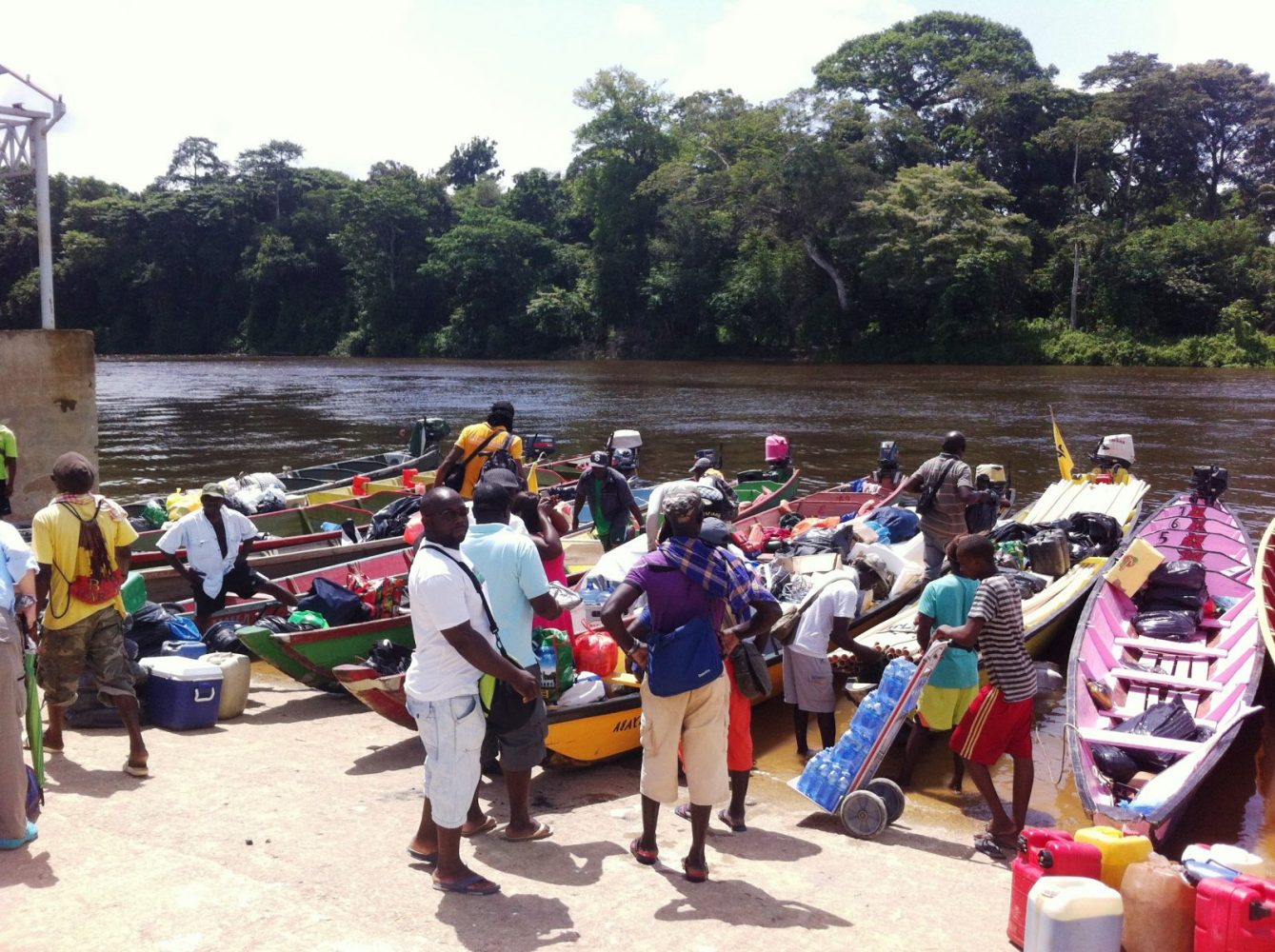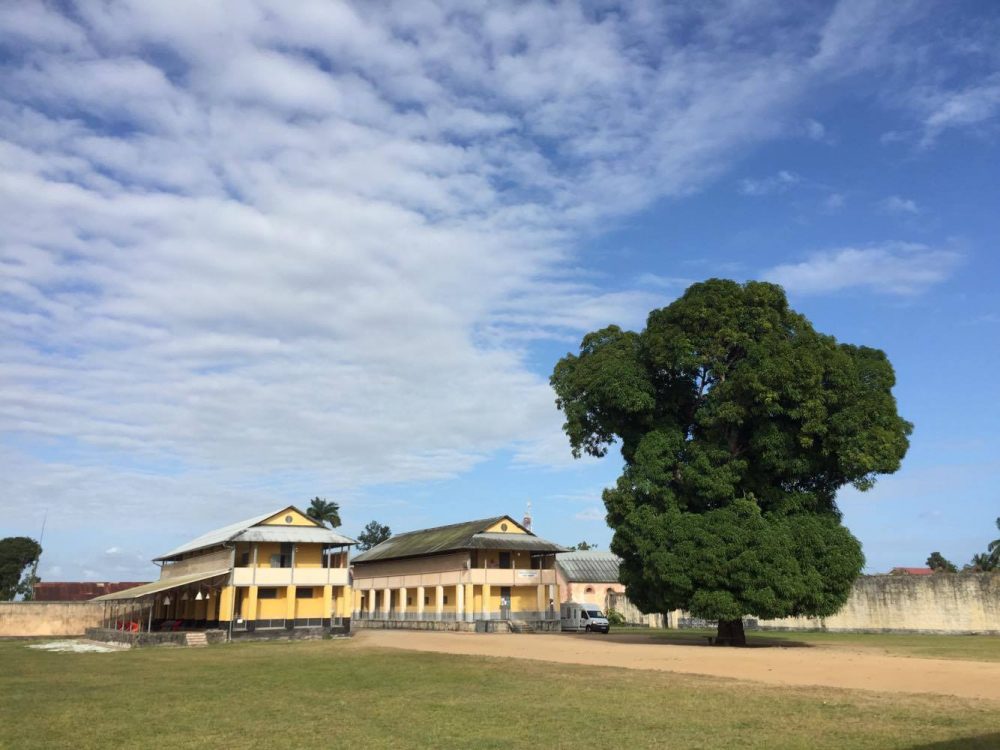Exploring the Guyanas and the Upper Suriname River

Table of Contents
The Guyanas
It is hard to know where to start really, when describing the Guyanas. Most folks don’t know where they are, and those that do have only a fleeting memory of school geography, or perhaps collecting stamps.
The Three “Guyanas” lie on the northeast coast of South America. They are politically different, two independent (Guyana of Great Britain and Suriname of Holland), and French Guyana remains an integral part of France.
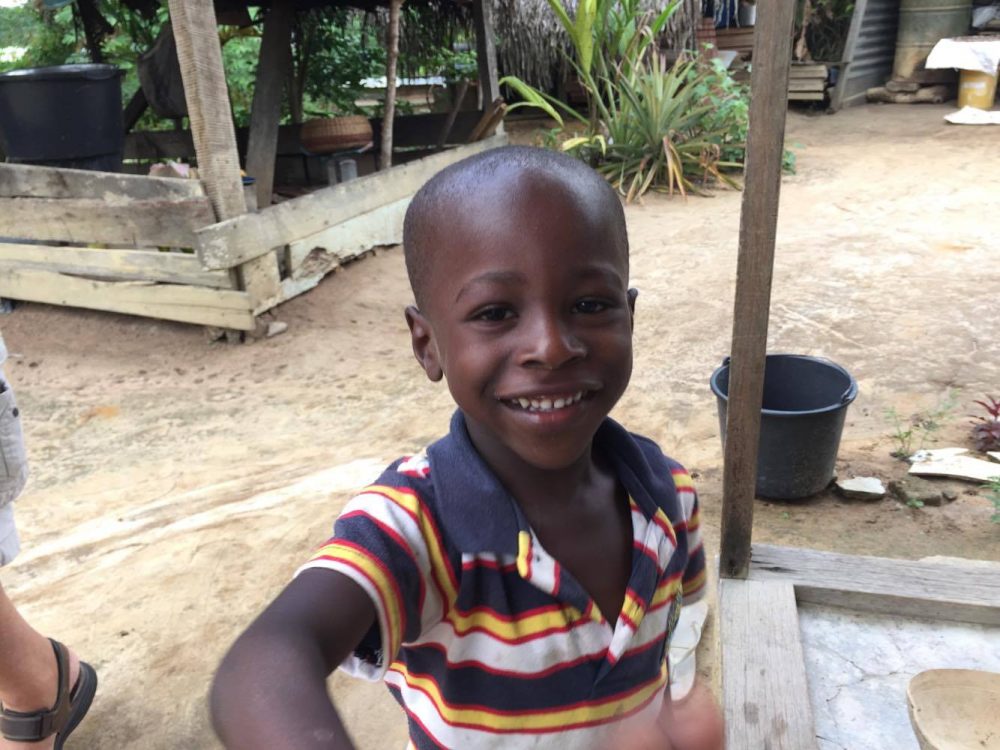
They are a part of the giant Amazon basin, and are characterized by massive rivers flowing out to the ocean through vast jungles. They are home to a wide variety of people, a reflection of the countries’ harsh history and importation of slaves and indentured labour from Africa, India, China and Indonesia.
Added to these poor folks, were the settlers from France, Holland and the Britain, and a few displaced Brazilian Jews, some Venezuelans and, of course, the completely bewildered Amerindians to whom these lands had been home and peaceful for centuries.
The cocktail was poisonous; the lands violent and difficult, and by the end of the nineteenth century most of the plantations had died out to be swallowed whole by the jungle, and the French left to develop their ghastly penal settlements in peace.

French Guyana
The Camp de Transportation in St. Laurent, French Guyana. For contemporary tourists, however, this toxic history, now settled, offers an extraordinary opportunity to see fascinating and friendly communities, deep jungle, rich savannas, quirky cities and beyond all, friendly and welcoming people.

The Rupununi Savannah, Guyana
The Rupununi Savannah of southern Guyana, where I spent such a splendid time at the Manari Ranch, is the complete opposite of the jungles of central Suriname. So by the simple expedient of three plane rides (Lethem/Georgetown, Georgetown/Zoorg en Hoop, Zoorg en Hoop/Kajana), I leaped from turf to surf.
The Upper Suriname River
The Surinamese jungle is a wonderful place; in particular, I love the Upper Suriname river, and the rich African culture that it embraces. Twenty-three settlements, established by the Saramaccan tribe of “Maroons”, escaped slaves of the late 17th and early 18th centuries, lie along this gorgeous river.
They are miles beyond the road system, and for many years lived as a predominantly self-administering region. Their government had a single leader, with captains for clusters of five or so villages each of which had their own captain and vice-captain. This structure kept order, maintained their culture and language, and lived their lives.
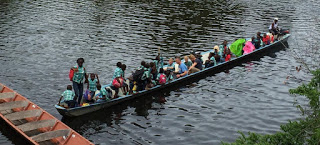

Traditional to this day, African anthropologist come to study the language and culture of Benin and Dahomey, lost to contemporary Africa, but preserved here in the Surinamese jungle. The villages are neat, clearly structured and the people along the river busy and alive.
Their societies have, for all intents and purposes been cashless for centuries, as they have grown and caught their food, and built houses, boats and furniture from the myriad of available resources; life is slow, and iguanas plod gently through the communities.
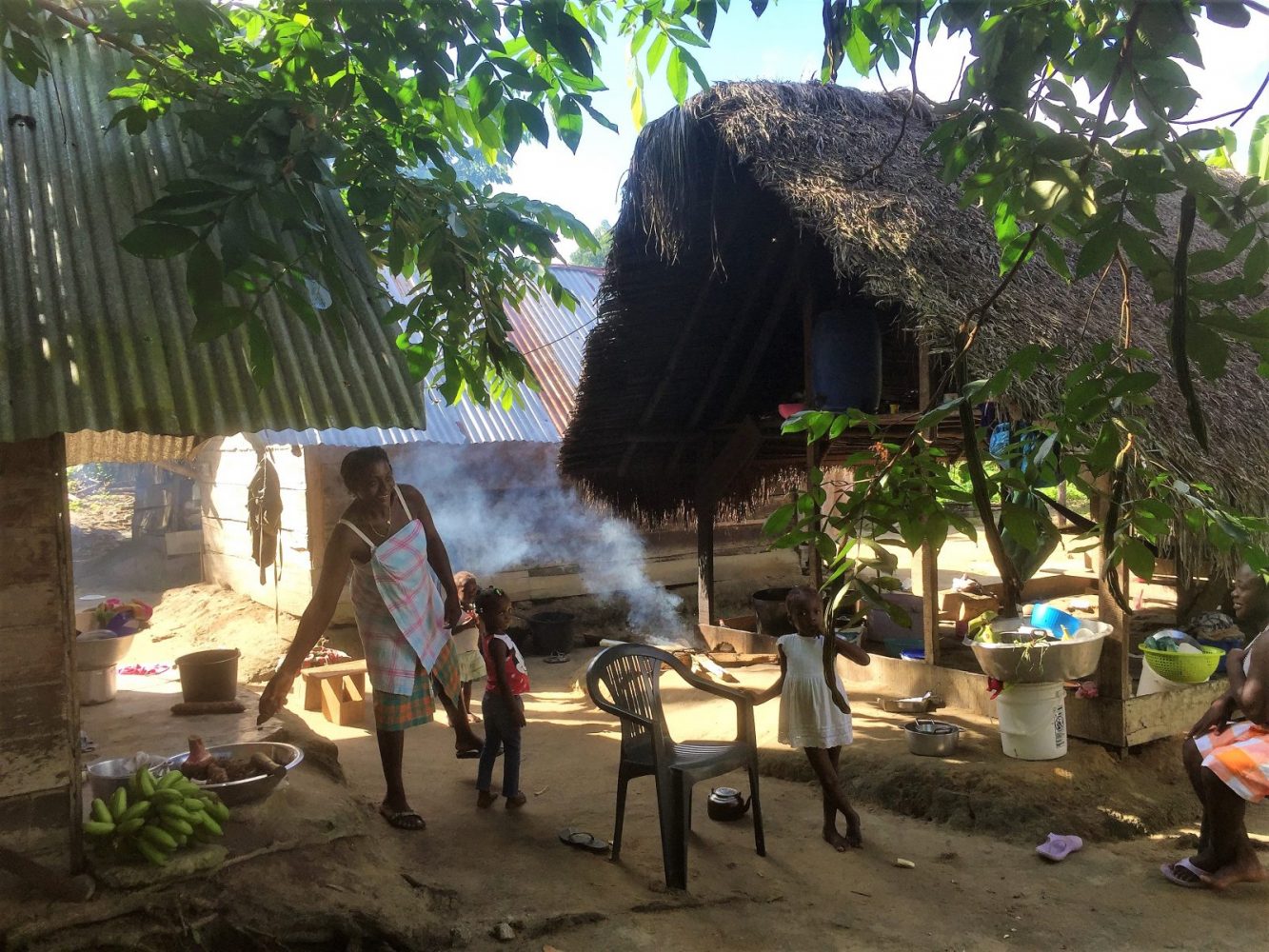
The need for cash, however, has gradually encroached; one cannot pay a cell-phone bill with coconuts, and Facebook is as prevalent here as it is in London. As is the way of the world, young men have gone away in search of money, there being little cash in the jungle, and quickly, centuries of carefully structured societies are being changed.
One answer to this has been to develop some tourism, and to this end there are now over twenty “lodges”, of varying sophistication and comfort, spread along the river. This, of course, is too many, and soon enough some will fail, and slowly disintegrate into the water.
Now, however, visitors are spoiled for choice, and they offer a truly authentic and unpasteurized experience of the deep jungle. The creatures, great and small, are there; the forests deep, riding into the river system between high canopies of massive trees one is simply in awe of the environment.
Huge walls of vegetables; villages made of leaves; trees offering a myriad of wonderful medical benefits; food scuttling and swimming all around and not a snowflake to shovel.
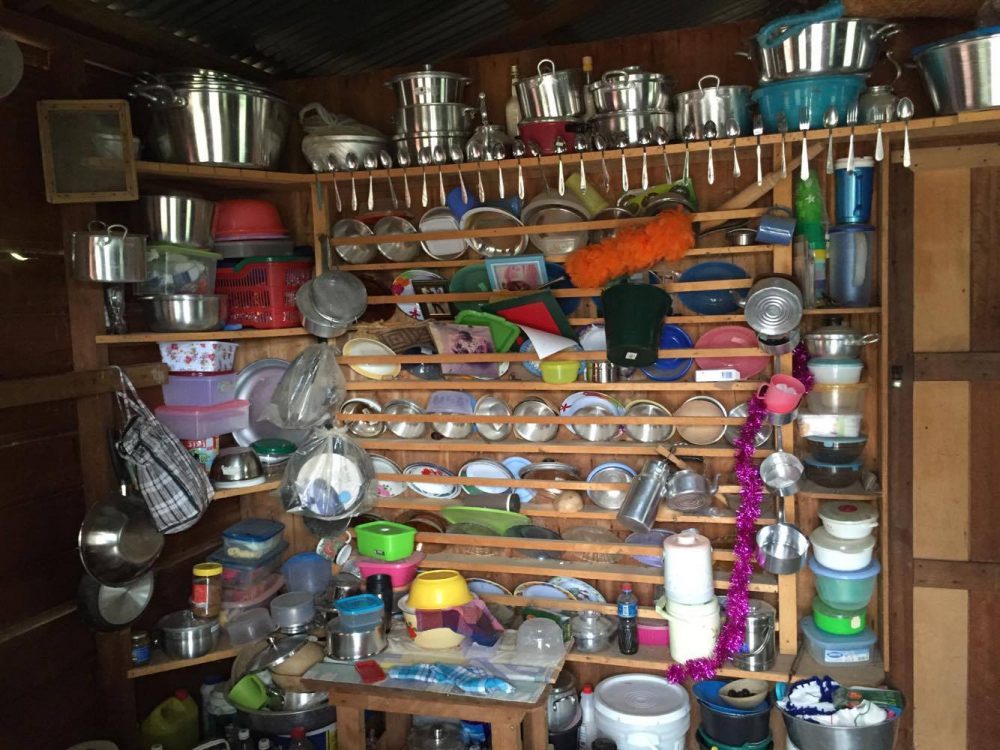
The Upper Suriname River is astonishing; only from the air can one realize that it is significantly populated; the villages spread along the ribbon of water from the Brokopondo Lake to the junction with the Pikin and Gran Rios. Communities of fascinating, knowledgeable, friendly people trying their best to keep their culture and spirit alive.
As a visitor, one feels like a voyeur; we are there to learn and to appreciate, and to do so one must observe and inquire. It can be awkward; some want their photos to be taken, some believe that by listening to stories we are stealing their words.
Women work at the river’s edge cleaning and scrubbing paying little heed to contemporary clothing conventions, but too many wanderers observing have made them self-conscious, and they are changing their ways.
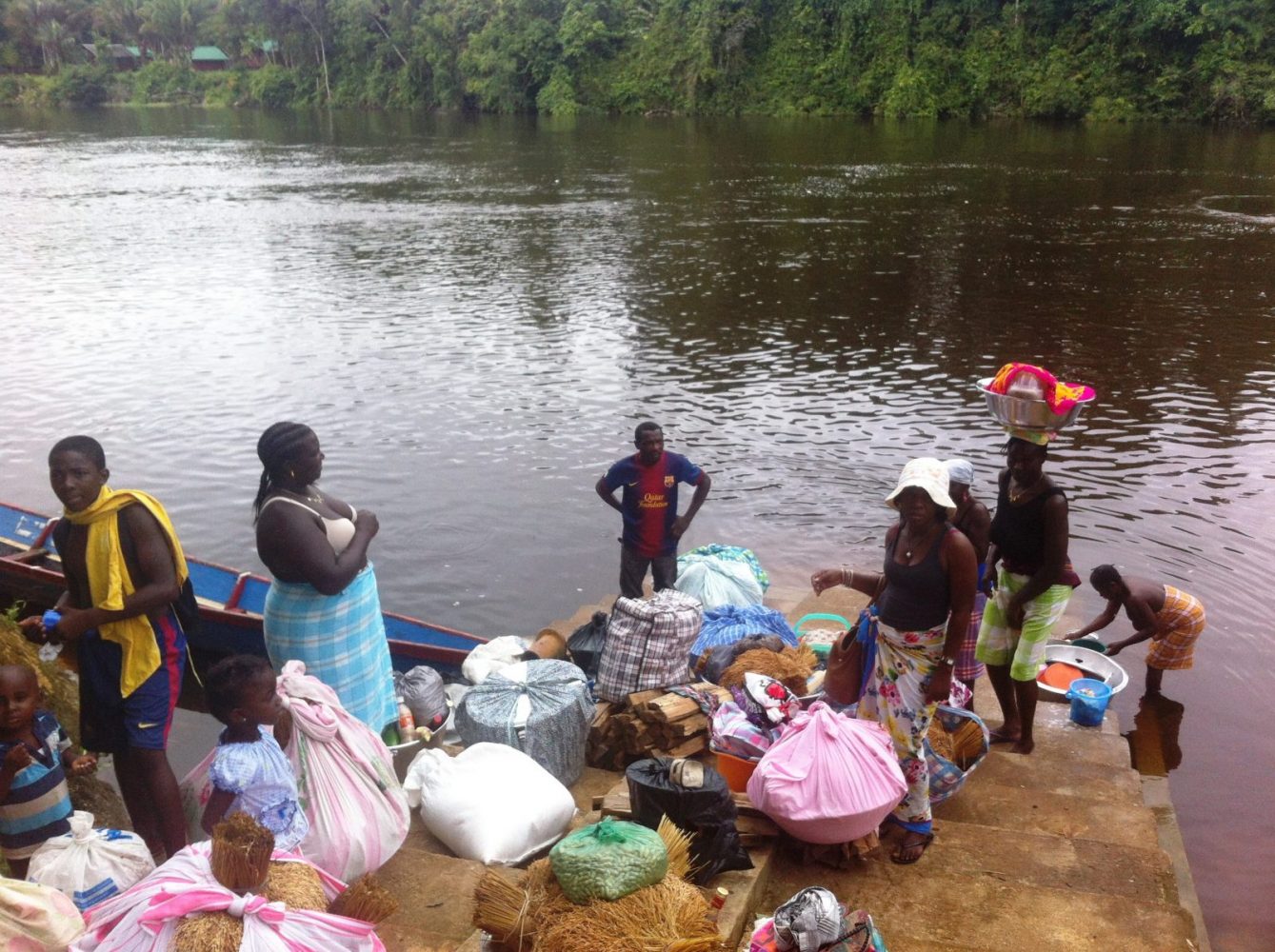
Traditional lives are lived; following the death of an elder, the men of the community will take the body to a sacred place in the forest for three weeks; women will bring some supplies, but other than this brief contact, they are alone with the spirits of the people and the environment; these traditions, such a vital part of the fabric of the Saramaccan society are slowly being nibbled away.
It is, perhaps inevitable, but it makes the privilege of being welcomed into these communities even more precious.
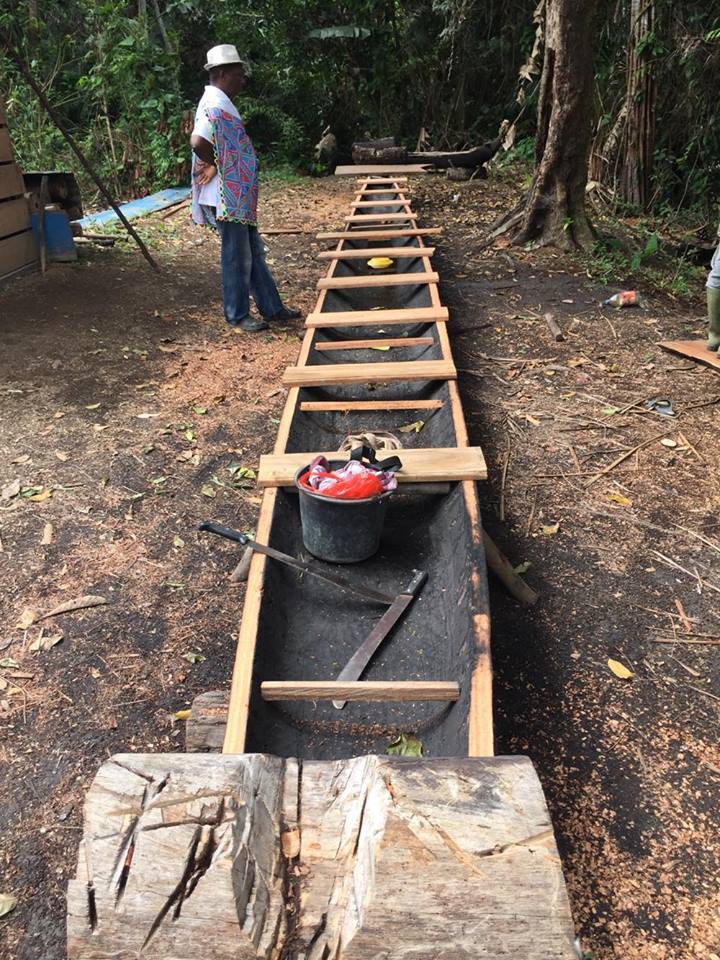
Now is the time to visit; combining the Savannah of southern Guyana with the Maroon villages of the Upper Suriname river is an extraordinary combination; the “turf and surf” of the Guyanas, the yin and yang of the northern Amazon. A prefect journey for those seeking an understanding of the environment, the people whose lives are so intimately woven with their lands and the cultures of this remote region before they are gone.
The Guyanas offer a fabulous experience for some travelers; those with an inquiring personality, a liking for a little discomfort, an appreciation of the delicious meat of the Tapir and a desire to escape the relentless homogenization of the world.
The Guyanas are no theme park; they are the real thing.
